R IBBONWORK
E MBROIDERY
Techniques and projects

R IBBONWORK
E MBROIDERY
Techniques and projects
Sophie Long


CROWOOD
First published in 2017 by
The Crowood Press Ltd
Ramsbury, Marlborough
Wiltshire SN8 2HR
www.crowood.com
This e-book first published in 2017
Sophie Long 2017
All rights reserved. No part of this publication may be reproduced or transmitted in any form or by any means, electronic or mechanical, including photocopy, recording, or any information storage and retrieval system, without permission in writing from the publishers.
British Library Cataloguing-in-Publication Data
A catalogue record for this book is available from the British Library.
ISBN 978 1 78500 253 3
 C ONTENTS
C ONTENTS 

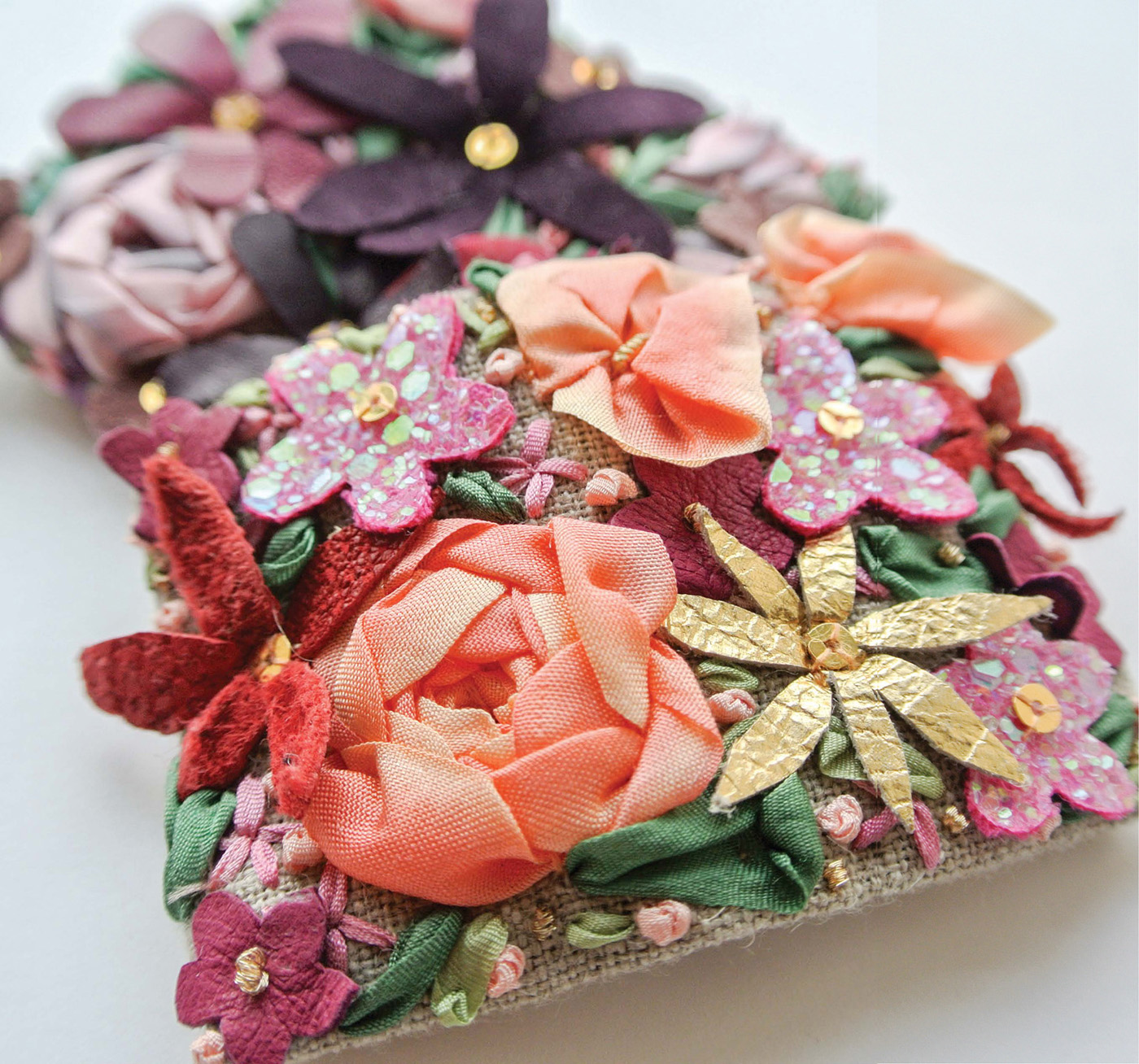
Square brooches, mixed silk ribbons and leather flowers worked onto linen.
 P REFACE
P REFACE 

E mbroidery has been a huge part of my life for over a decade now. Rarely a day passes that does not involve a needle, thread, a piece of fabric and a cup of tea. I am one of the few who have been fortunate and disciplined enough to expand this passion into a career. Bearing in mind I hadnt stitched so much as a button back on prior to starting my threeyear apprenticeship at the Royal School of Needlework, it has been quite a journey. For me, embroidery began as more of an interest than a true love. Fast-forward several years and now any free time that presents itself is more often than not spent in my studio. I truly hope this love of stitching stays with me indefinitely.
The vast majority of my work now revolves around teaching I feel it essential that I pass on the substantial array of techniques I was able to master while studying full time over those three years. Embroidery at times has been referred to as a dying art; however, the recession seems to have brought an increased level of interest and many eager-to-learn students into my world. More people than ever are excited to learn these skills. Teaching not only allows me to pass on these skills, but also keeps me on my toes with whats going on in the current embroidery world. With that in mind, I ensure my work uses traditional skills in contemporary ways allowing this art form to be as relevant today as it has been in days gone by.
This book will take you on a creative journey through ribbon embroidery stitches, surface stitches used in ribbon embroidery, stumpwork (raised embroidery) and goldwork (metal thread embroidery) techniques that utilize silk ribbons. Each technique will be displayed with clear illustrations and text, allowing you to follow every stitch step by step. A wide variety of photos from my own work demonstrating these techniques are included, hopefully to inspire readers to create their own beautiful pieces. Often a stitch will be learned from a book, but the key is knowing when and how to apply that stitch to achieve maximum effect. This book also includes projects for readers to undertake, ensuring the content absorbed is realized in the best way possible by putting it into practice. The projects will begin with the simple techniques, and progress in difficulty and effectiveness as readers work their way through them. Wherever possible, I will provide specialist hints and tips, aiding skill level acquisition and workflow. Vital insider information on suppliers, materials and equipment is also included.
I hope this book will start you on a long and rewarding affair with ribbon embroidery, where you will be entranced by the beauty and delicacy of this enduring art.
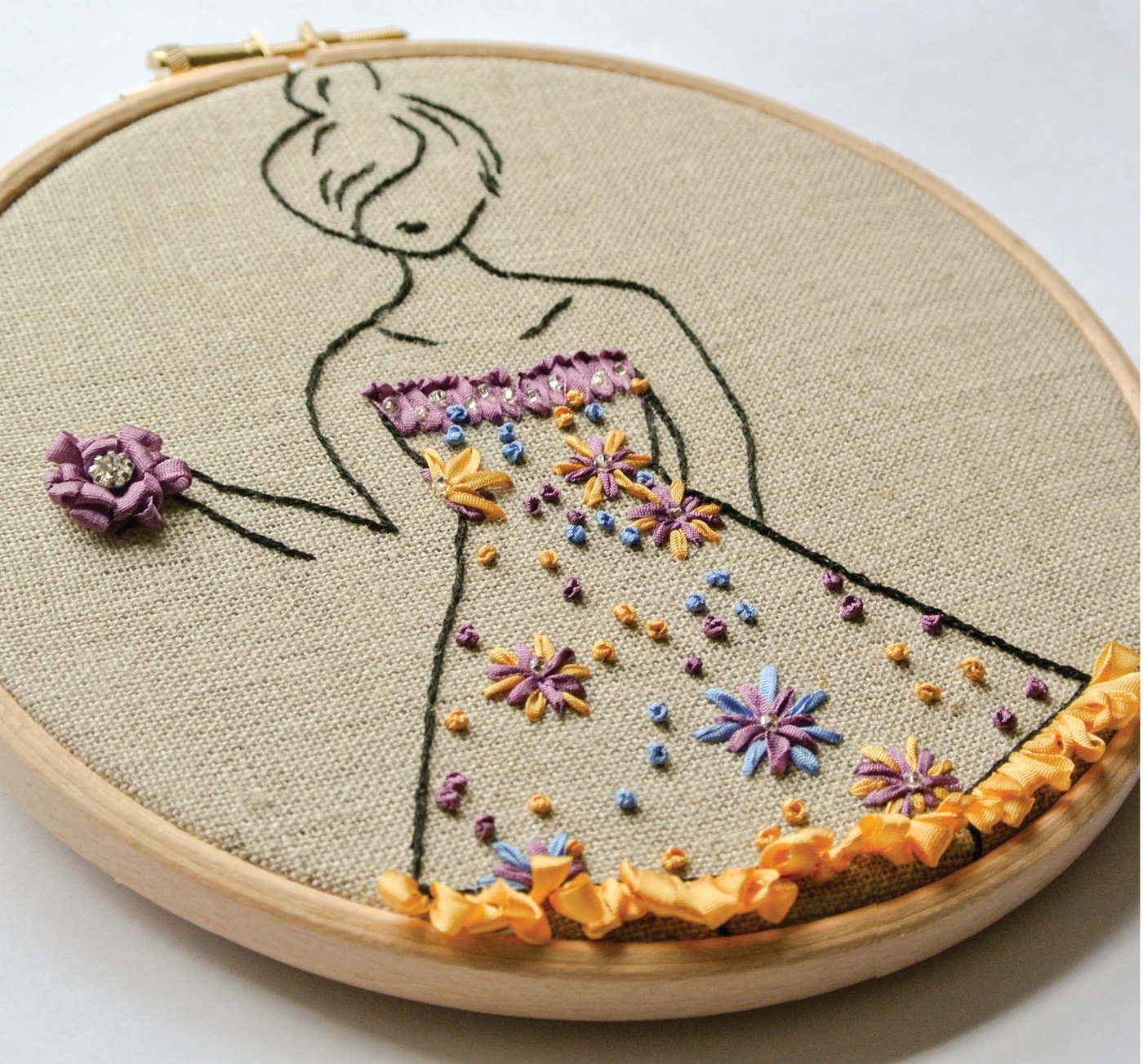
4mm silk ribbon and stranded cotton worked onto linen.
 I NTRODUCTION
I NTRODUCTION 

R ibbon embroidery is a form of embroidery that uses ribbon either in the needle, which is then stitched into the fabric, or ribbon that is worked away from the fabric using a different thread and then applied to the work. Traditionally these ribbons were made of high-quality silk, which made them very luxurious; today people use a wider range of ribbons, but synthetic ribbons do not create such richness. Ribbons made of one hundred per cent silk are still the preferred medium.
Silk ribbon embroidery dates back to the seventeenth century, and originated in France. Ribbons were embroidered to embellish clothing, huge rosettes were worked onto mens coats and often floral sprigs were embroidered onto the elegant clothing of royalty. These items would have been worked by professionals in workrooms. They were very time-consuming to make silk ribbon-embroidered gowns in the 1700s were very ornate and would have taken hundreds of hours to create. This, combined with the cost of the materials, meant that these items of clothing were very expensive to buy. Silk ribbon embroidery then flourished on the European continent and also travelled to America, where it grew in popularity.
In the Victorian era silk ribbon embroidery was more accessible and was commonly used on items such as quilts and clothing. This meant more people were able to own an item that had some ribbon embroidery on it, making it a more recognized embroidery technique. Ribbon embroidery was used by ladies to show off their embroidery skills on household items. These pieces were often worked in dusky pinks and sage greens, and therefore this is the image that people often have when you initially mention ribbon embroidery.
Sadly, ribbon embroidery went out of fashion towards the end of the eighteenth century and other embroidery techniques replaced ribbons. Ribbon embroidery was reintroduced to the fashion industry by the French couturier Charles Worth (18261985). As industry developed the processes involved in producing ribbons and the number of countries producing them increased, ribbons were more accessible and therefore cheaper to get hold of. This meant that, again, ribbons were more widely seen and recognized as an embroidery technique.
In the nineteenth century amateur embroiderers started working with ribbons again; stitching ribbon onto clothes came back into fashion, with ribbon embroidery used on handbags and gloves. Plain items such as shawls were embellished with floral designs to liven them up.
Today ribbon work is still a relatively unexplored embroidery technique, as it is rarely taught and practised; but once people have tried it, they are often hooked. The speed and simplicity of ribbon embroidery is always a pleasant surprise and the delicacy of the ribbons means that really stunning pieces can be created. Silk ribbon is now a thread that is mass-produced, so in theory it should be easy to source. However, with the decrease in the number of haberdashery shops in the UK, the availability of silk ribbon is mostly restricted to online shops. When you do find a supplier, the range of colours available is huge; you can really get carried away! Online you are really spoilt for choice with the range of colours, widths and whether the ribbon is plain or patterned. The only downside is not being able to touch the fabric or see the colours in real life. Therefore, some purchases may not be quite right when they arrive, but can always be used for another project.
Next page
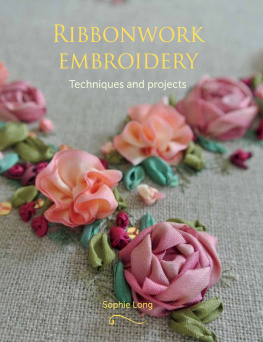







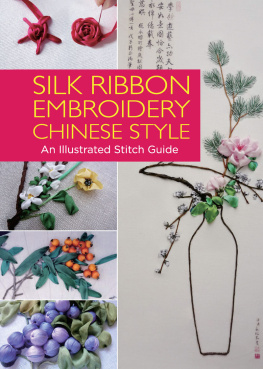
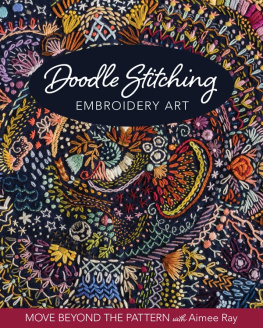
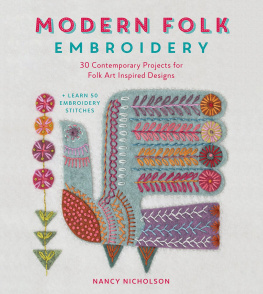
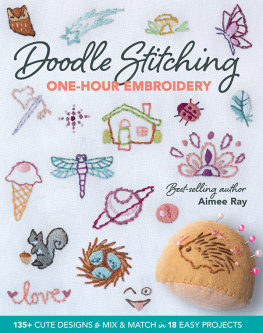
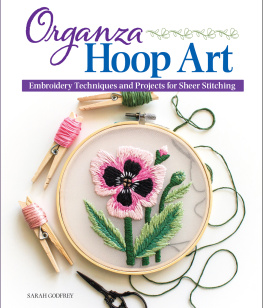
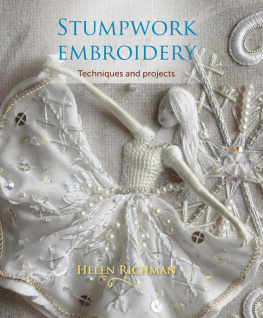
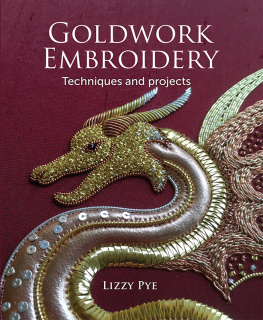
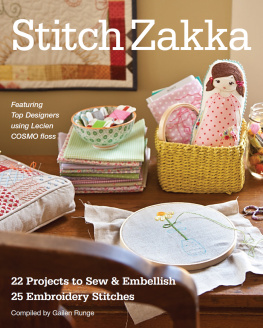

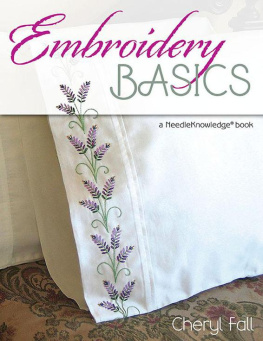



 C ONTENTS
C ONTENTS 


